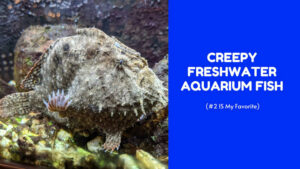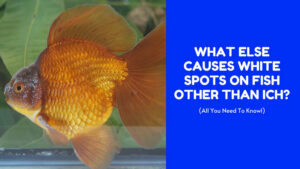Java moss is a popular plant for keeping in fish tanks because it’s easy to care for and extremely hardy. Its unique ability also can give any boring and bare aquarium a boost of life.
Driftwood is one of the most versatile pieces of aquarium décor. It can be used to create an elaborate aquascape, build hiding places for your fish to hide in and explore, and provide essential fiber for plecos. However, the likelihood will be that you’ll probably find that there is still something missing with bare driftwood. This is where java moss comes in!
Java moss is a perfect plant to use to cover driftwood. Its small and compact leaves will quickly attach themselves to the wood, and its fast growth rate means it won’t be long before the entire piece of driftwood is covered, providing a much-needed splash of color and life.
Keep reading to learn more!
Java Moss Profile

Before we get into how to grow java moss on driftwood, let’s take a look at the plant itself.
Although java moss is the most common aquatic moss species in the aquarium trade, there is confusion caused by its scientific name. In the trade, java moss is sold under the name either Vesicularia dubyana or Taxiphyllum barbieri. It’s easy to see how this confusion can happen because they both have similar-looking leaves.
Vesicularia dubyana was the first introduced to the hobby and called ‘Java moss,’ and is the name most widely used. However, as early as 1982, the moss expert Zennosuke Iwatsuki identified that the plant sold as java moss from aquarists was, in fact, Taxiphyllum barbieri.
Nowadays, V. dubyana has been more or less completely supplanted in popularity by T. barbieri, which was introduced to the hobby in 1933. Compared with V. dubyana, T. barbieri has a fast growth rate and has only been found in Vietnam. Additionally, V. dubyana (Singapore moss) is monoecious, while T. barbieri is dioecious. They have something in common and differences.
Many more species are now sold under the trade name of “Java moss,” but the price can vary remarkably. My favorites include weeping moss (V. Ferriei) and Taiwan moss (T. alternans), especially the latter, looking extremely striking.
- Hand Selected All Green and Healthy
Will Java Moss Grow on Driftwood and Rock?
Most commonly, java moss is used to attach to aquarium driftwood and rocks in an aquarium to add an aged look or build hiding places and spawn sites for fish and shrimp. You can leave them free-floating, but it’s relatively rare.
How to Attach Java Moss on Driftwood and Rock?
Java moss grows easily on almost every surface to spruce up your aquarium. Try to place it as thinly across the surface as you can so that you get as much of the java moss to cover the surface as possible, which will help keep its vigor up without having too many lower layers die off from lack of moisture.
I find the best places to attach the moss are along the length of the branch of the driftwood, as well as the base, rather than around the edges. This gives a more natural look, as if it’s growing out from the wood, and also provides more surface area for the roots to attach to.
There are several items that can help anchor java moss to surfaces, many of which you will probably find around your house. Here are some of the most popular:
- 【Distinctive Shape Drift Wood】Each piece of driftwood has a distinctive shape, with its own natural...
- 【Multi-Scenario Application】Each piece has ranging 7-13" in length,not just for aquarium decor, but...
- 【High-Quality Coral Driftwood】PINVNBY reptile wood are carefully selected manually, can be used for a...
- 【Pretreat Before Use】To ensure the natural coral driftwood have a better sinkable effect , you’d...
- 【High Quality Service】We want you to be absolutely satisfied with our aquarium driftwood, we are...
#1 Cotton Thread or Fishing Line
This is an effective way to attach java moss to something difficult to glue. Simply tie the thread or fishing line around the moss and driftwood. Tie it with many knots is not necessary. Two pieces of thread string will work. Additionally, don’t over-tighten the string but makes sure there’s no slack so the java moss can’t float away when your snails or shrimp inevitably decide to have a nibble.
Most cotton threads will rot after a few weeks and leave the java moss in place, so make sure to check it regularly and replace the thread as necessary.
A fine fishing line is a good option if you don’t want to use anything that will rot in your aquarium or worry about the attaching time. You can use either a clear or green fishing line, depending on your preference. It can be difficult to spot and will soon be covered in java moss.
#2 Cyanoacrylate Superglue
If you’re in a hurry and don’t have any thread or fishing line, you can use a small amount of superglue to attach the java moss to the object. Don’t worry, super glue is safe for use in an aquarium because Cyanoacrylate becomes completely inert when moist or wet.
Although aquarium sealant and adhesives are better, they are not really necessary. The normal cheap household super glue you can buy at the hardware store is usually fine.
Just apply a small amount to the dry wood or rock and then attach the java moss before the glue dries. Let it dry for an hour or two, then it’s good to go. Be careful not to use too much as it can make a mess and be difficult to remove if you’re not happy with the results. A small amount on the end of a toothpick is all you need. If you put too much, it will ooze out everywhere.
#3 Dry Start Method (DSM)
Java Moss dry start
Another great way to attach java moss to driftwood is the dry start method (DSM). This involves leaving the java moss out of water for a week or two to let it callous over and form a tight bond with the wood.
This method simply allows your carpet plants to grow quicker by giving them abundant CO2 in the air as compared to underwater. All you need to do is to tie the java moss around the piece of driftwood and leave it in a humid environment for a week or two. After that, you can dip the whole thing in water, and it should stay in place.
If you want to learn more about the DSM method, check out this guide by Buceplant.
Toothpicks or River Driftwood
Toothpicks or bamboo skewers can be used in a similar way as cotton thread or fishing line. In this video, Michael uses boiled toothpicks instead of driftwood to anchor moss that grows underwater.
This is a great way to secure java moss in hard-to-reach places or where you don’t want the string or fishing line to be visible. You can get creative on the way to assembling toothpicks together.
If you don’t want to spend 5 hours boiling the toothpicks, you can pick up some river driftwood nearby and use that instead. Make sure to rinse it first to remove any dirt or debris.
Both are time-consuming methods, but the whole process is fun, and you’ll be rewarded with pieces of driftwood covered with java moss and more DIY idea for your aquarium.
Weigh it down
To do this, place a few small pebbles on top of the java moss to keep it in place. This method works better if you have glued the java moss to the driftwood. You will definitely need to check the pebbles every now; some snails or fish might decide to make them their new home.
Wrapping Up
As you can see, there are many ways to grow java moss on driftwood. It really depends on your preference and what you have on hand. Each method has its pros and cons, so it’s up to you to decide which one is best for your aquarium.
If you found this post helpful, please like and share it with your friends! Also, if you have any questions or comments, please leave them below. I would love to hear from you!
Have fun and a happy aquarium!







